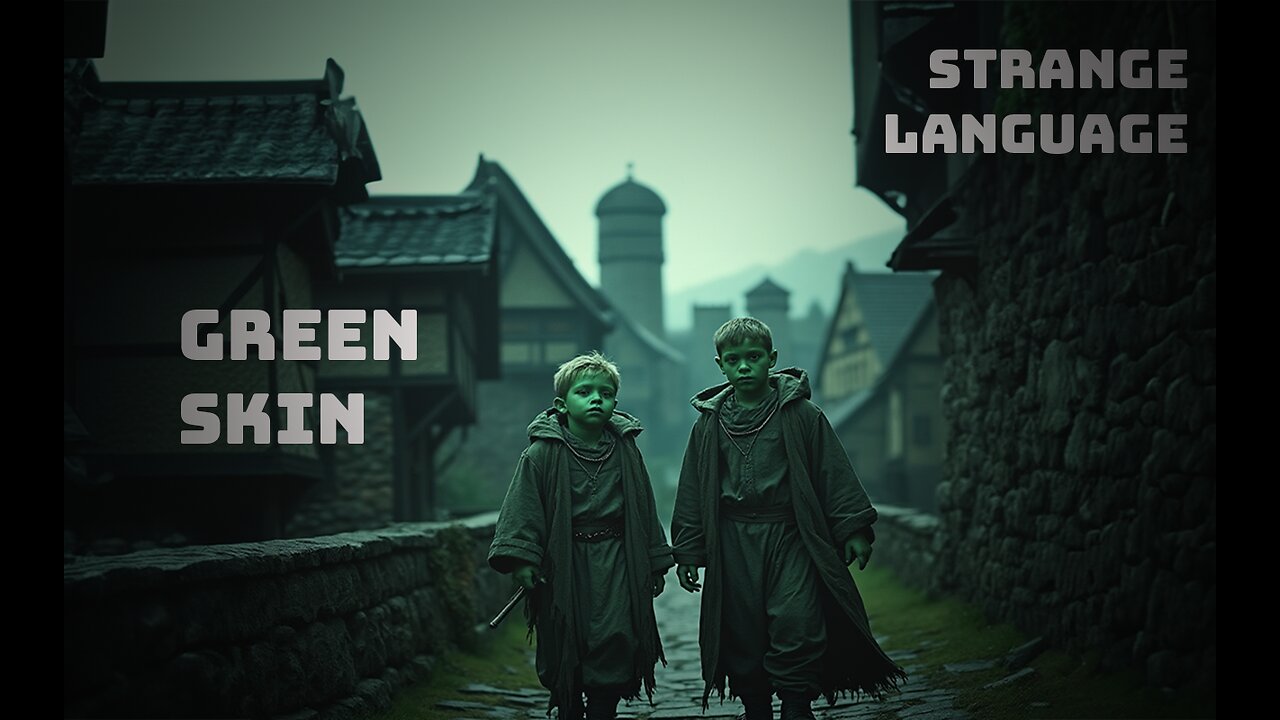Premium Only Content

The Green Children of Woolpit: England's 800-Year-Old Mystery
Journey back to 12th century England, a time of political upheaval and societal change, where a small village became the centre of a mystery that continues to baffle historians and ignite imaginations: the Green Children of Woolpit.
Imagine the scene: villagers discover two children, a brother and sister, huddled near a wolf trap. Their skin is green, their clothes strange, and their language, unlike anything heard before. Who were these children? Where did they come from?
The surviving child, Agnes, eventually learns English and tells a tale of a strange and wondrous land: St. Martin's Land, a place where everything is green and the sun casts an eternal twilight. Were these children visitors from another world, victims of circumstance, or was their story a fabrication woven from fear and misunderstanding?
Examining Theories about the Green Children of Woolpit
The sources offer numerous theories about the Green Children of Woolpit, ranging from historical explanations to supernatural interpretations. Let's examine some of the key ideas presented:
Historical Explanations:
●Flemish Immigrants: Several sources propose that the children were Flemish immigrants who, for various reasons, ended up lost and disorientated in Woolpit.
○This theory stems from the fact that England experienced significant Flemish immigration during the 12th century.
○Woolpit's location in Suffolk, a region with a history of Flemish settlements, further supports this possibility.
○Their "green" appearance could be attributed to Chlorosis, a condition resulting from malnutrition that can cause a greenish skin tone. This condition was common in medieval times, particularly among lower classes with limited diets. The fact that the girl's skin returned to a normal colour after adopting a healthier diet supports this theory.
○The children's unintelligible speech could have been a form of Dutch, mistaken as gibberish by the English villagers.
○The "twilight" of St. Martin's Land that the surviving girl, Agnes, described might refer to the darkness of the dense Thetford Forest.
○One source even suggests that St. Martin's Land could be a misconstrued reference to Fornham St Martin, a village known for its Flemish cloth workers.
●Lost Children: Another historical theory posits that the children were simply lost children from a nearby village or forest, their unusual appearance and behaviour stemming from malnutrition, fear, and disorientation.
Folklore and Supernatural Interpretations:
●Folklore Motifs: Many sources highlight the presence of common folklore motifs in the Green Children narrative, leading to interpretations rooted in the supernatural.
○The children's green skin is seen as a common symbol for otherworldliness and the uncanny, often associated with fairies and other mythical creatures.
○Their initial refusal to eat anything except raw broad beans is significant. One source notes that beans were sometimes considered "the food of the dead" in medieval folklore, linking the children to the supernatural realm.
○The "Otherworld" theme features prominently in various interpretations. Agnes' description of St. Martin's Land, a subterranean world of perpetual twilight, aligns with common folkloric depictions of fairy realms or hidden kingdoms.
○The cave, described by Agnes as a passageway to their homeland, is a recurring motif in folklore, often symbolizing a portal to another world or a liminal space between realms.
●Extraterrestrial Visitors: The children's unusual appearance, their strange language, and their claims of a different world have led some to propose an extraterrestrial origin, a theory that gained traction in the 17th century and continues to intrigue some researchers.
Other Theories:
Beyond the historical and folkloric interpretations, the sources present a range of other theories, including:
●Medical Conditions: Some sources suggest that the children's green skin could be attributed to specific medical conditions, such as Hypochromic Anemia or poisoning from arsenic or ergot (a fungus that can contaminate rye). However, these theories often fail to account for other aspects of the story, such as the children's language and their claims of a different world.
●Symbolic Allegory: Some interpret the story as an allegory for social or religious concepts prevalent in 12th-century England. One source suggests that the children's green skin might symbolize the "otherness" of the indigenous Britons in the face of Anglo-Saxon and Norman rule. Others propose that the story reflects anxieties about outsiders and the challenges of assimilation during a time of societal change.
The Enduring Mystery
Despite centuries of speculation and analysis, the true origins of the Green Children of Woolpit remain a mystery. The story's enduring appeal lies in its ability to capture the imagination and its resistance to a single, definitive explanation.
Share your theories in the comments below!
-
 1:57:14
1:57:14
vivafrei
18 hours agoEp. 280: RFK Jr. Senate Hearing! Activist Fed Judges! Epstein Victims DEBACLE! & MORE! Viva & Barnes
65.5K62 -
 LIVE
LIVE
Major League Fishing
3 days agoLIVE Tackle Warehouse Invitationals Championship, Day 3
307 watching -
 LIVE
LIVE
GritsGG
1 hour agoTop 250 Ranked Grind! Dubulars!🫡
164 watching -
 LIVE
LIVE
TheManaLord Plays
5 hours agoMANA SUMMIT - DAY 2 ($10,200+) | BANNED PLAYER SMASH MELEE INVITATIONAL
199 watching -
 5:31
5:31
WhaddoYouMeme
1 day ago $2.54 earned$8,000/hr Dating Coach Loses Everything (Sadia Kahn)
15.8K6 -
 LIVE
LIVE
Ouhel
4 hours agoSunday | CoD 4 | CAMPAIGN PLAYTHROUGH | Nostalgia Kick
77 watching -
 13:14
13:14
DEADBUGsays
1 day agoThe Murder of Veronica Kaye | Cold#11
12.3K4 -
 14:53
14:53
Adam Does Movies
19 hours ago $0.92 earnedIs There Any Saving Jurassic World?
12K2 -
 1:28:30
1:28:30
Sports Wars
5 hours agoNFL Week 1 MADNESS, Phillies Karen Goes VIRAL, Angel Reese Suspended As WNBA Is DEAD
24K3 -
 LIVE
LIVE
Total Horse Channel
15 hours ago2025 Reno Snaffle Bit Futurity | Sunday
40 watching